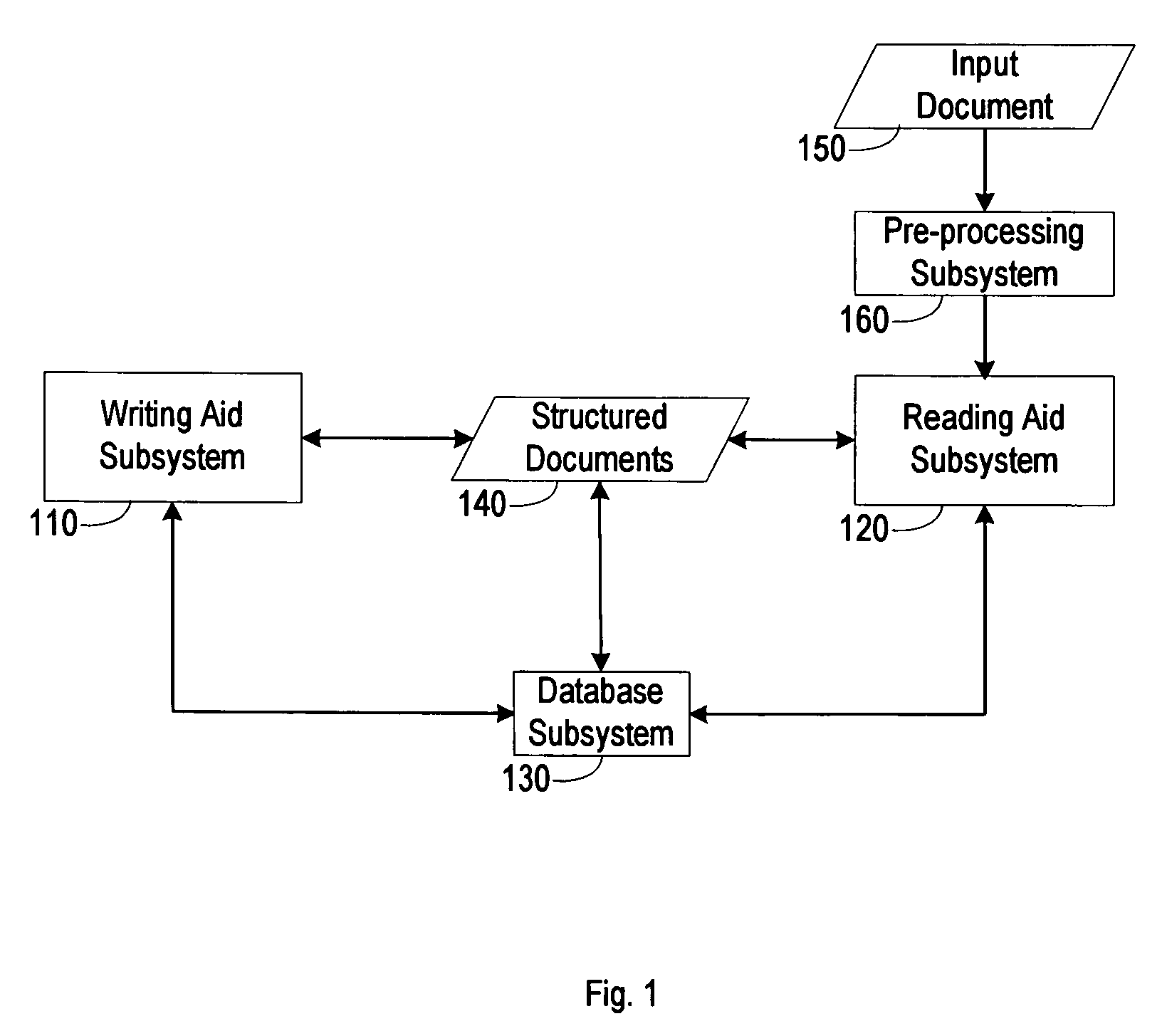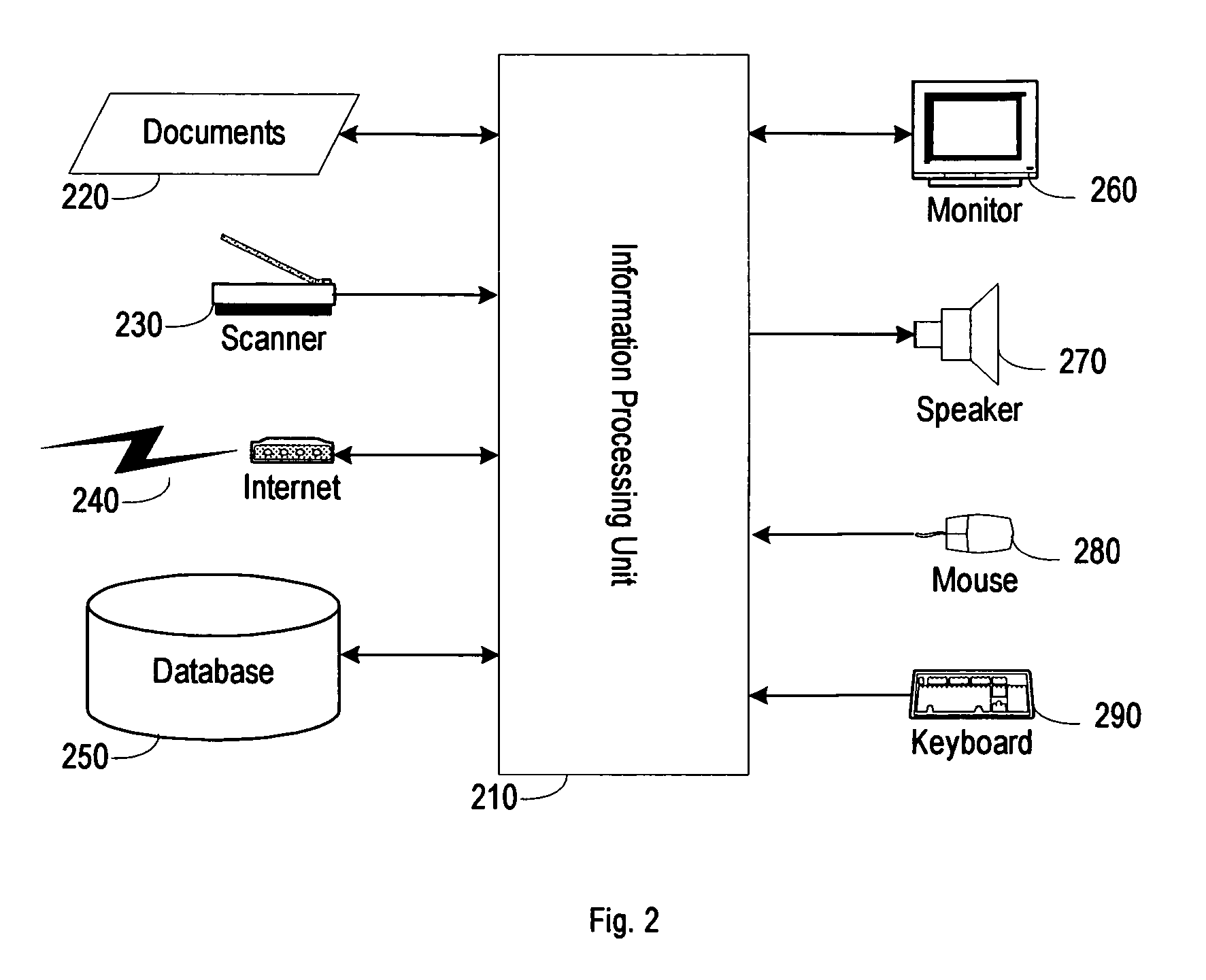Writing and reading aid system
a technology of reading aids and books, applied in the field of writing and reading aid systems, can solve the problems of affecting the quality of books, the inability of regular books to meet the different needs of many readers, and the inability to sell volumes effectively, so as to achieve completeness and flexibility in the presentation of information
- Summary
- Abstract
- Description
- Claims
- Application Information
AI Technical Summary
Benefits of technology
Problems solved by technology
Method used
Image
Examples
Embodiment Construction
[0050]FIG. 1 shows the overall configuration of a system for helping a user to write and to read. The writing aid subsystem 110 provides various interfaces to help a user to stimulate, develop, organize, and express ideas, to guide a user to develop details, to support a user to assign properties to related blocks of text, to organize information in a structure, to assist a user to configure display forms, and to generate a structured document. Here a structured document is a document containing organized information and assistant information for recovering the structure from the structured document. The counterpart of the writing aid subsystem 110 is the reading aid subsystem 120. It helps a user to survey a document, set up a reading purpose, and select a reading strategy, provides a user necessary interface to specify and modify rules for identifying the interesting portions of the document, extracts information, creates a structure to hold information systematically, and display...
PUM
 Login to View More
Login to View More Abstract
Description
Claims
Application Information
 Login to View More
Login to View More - R&D
- Intellectual Property
- Life Sciences
- Materials
- Tech Scout
- Unparalleled Data Quality
- Higher Quality Content
- 60% Fewer Hallucinations
Browse by: Latest US Patents, China's latest patents, Technical Efficacy Thesaurus, Application Domain, Technology Topic, Popular Technical Reports.
© 2025 PatSnap. All rights reserved.Legal|Privacy policy|Modern Slavery Act Transparency Statement|Sitemap|About US| Contact US: help@patsnap.com



